 By Staff By Staff
September 22, 2015
BURLINGTON, ON
This is a different way of promoting fire safety.
Fire official’s report that the #1 cause of home fires is unattended cooking.
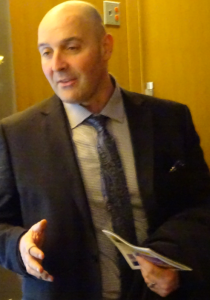 Fire Chief Tony Bavota, Mayor Goldring, people from the Burlington Restaurant Association and Robert Bateman High School are joining together for activities to help spread this public safety message. Fire Chief Tony Bavota, Mayor Goldring, people from the Burlington Restaurant Association and Robert Bateman High School are joining together for activities to help spread this public safety message.
 Mayor Goldring brings a bit of an edge to the cooking competition to take place at Robert Bateman – he flips ribs pretty well – let’s see what he flips at the high school. Spreading the fire safety message is being tied to the Top Chef Competition at Robert Bateman High School. Four teams, each with one Burlington firefighter and two Robert Bateman High School culinary students, will compete to create a fiery dish from a mystery box of ingredients. Contestants can earn points or be penalized by answering cooking safety trivia.
Other features of the event include interactive stations with information on smoke and CO alarms, the 911 call system, career options in the fire service, a firefighter crash course and technology demos as well as Burlington Fire Department truck display.
This sounds like a neat event; it isn’t open to the public – the Gazette will tell you all about it

 By Pepper Parr By Pepper Parr
September 21, 2015
BURLINGTON, ON
The people of Burlington did it for the 35th time – the Annual Terry Fox run for a cancer cure.
This time it could well have been called the Team Casey get together.
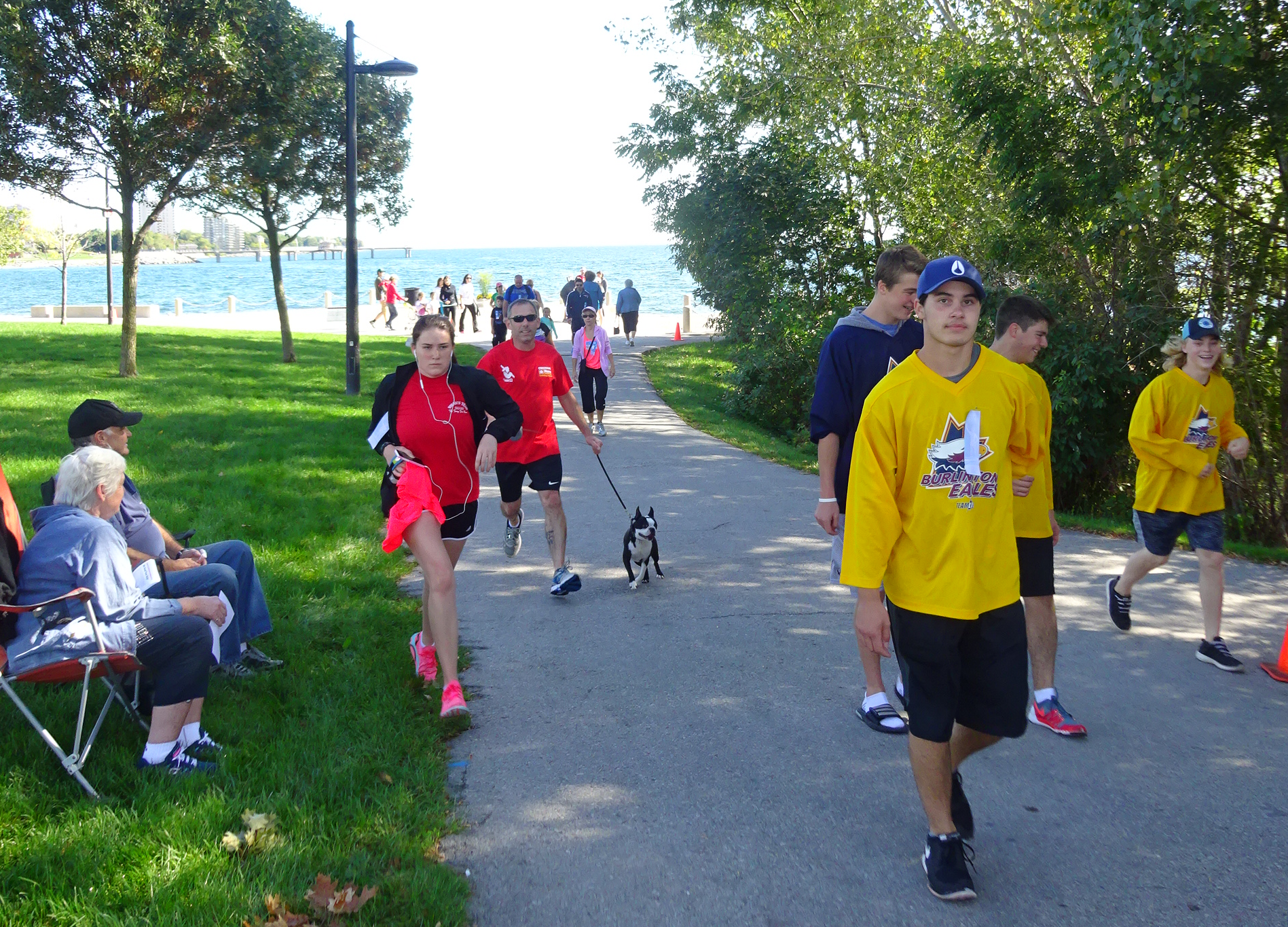 The fast runners had finished the course – those who chose a more leisurely pace brought up the rear. Casey Cosgrove who has battled cancer for a number of years and has become something of a poster boy for the people at the Princess Margaret hospital where his treatment program takes place chose a spot yards away from where the Terry Fox marker is going to be placed greeting friends (and there were a lot of them) and having his picture taken.
 Another Team Casey  A Team Casey – there were about eight of them. There seemed to be as many Team Casey T-shirts being worn as there were Terry Fox –shirts.
The weather was perfect
Don Carmichael reports that there were 900 + participants, 44 teams – way up from last year. 110 volunteers. More than $ 67,000 raised on the day with donations still pouring in. It’s not too late to donate. We want to reach $100,000.
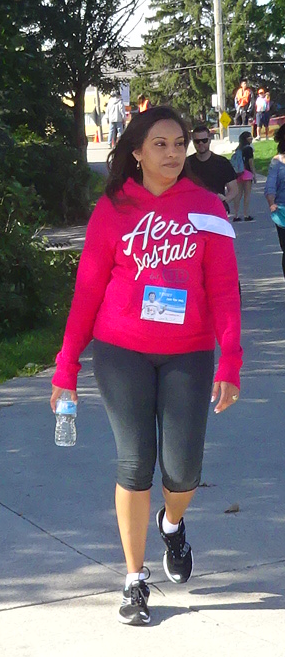 Many walkers were alone with their thoughts – a card with the name of a person they wanted to remember affixed to their sweater The Run is a day out for many people – a time to chip in and do their bit – many people make this an annual family event. Brian Heagle was out there with his family, including his Mother – she seemed to do just fine.
One participant had completed his walk and was about to head home and said to the child with him – “why don’t we walk out on the pier”. We asked: “You’ve never been out on the pier” “Nope” he replied – “I always felt it cost too much and I didn’t want to go out on the thing.”
Resentment persists doesn’t it?
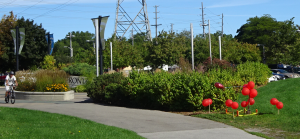 The location of the Terry Fox market that will be erected later this year  KM 3582 – a point at which Terry Fox paused as he left Burlington and head to Hamilton on an epic journey he was not able to complete. And so does the annual run. Later this year a marker will be set in concrete at one of the points Terry Fox stopped at as he ran through Burlington 35 years ago.

 By Pepper Parr By Pepper Parr
September 20, 2015
BURLINGTON, ON
The crowds they had hoped for did not materialize but the weather did hold. There were more people at No Vacancy’s Supernova this year than there were at the Cirque event held at Village Square last year.
 Perhaps outside some comfort zones. Let’s look at what was good. The Art Market was good – some of the exhibits stunned people a little – others were a pleasure to look at. Art is supposed to take you out of your comfort zone.
The Teresa Seaton/Tomy Bewick event and the Kune Hua event were superb – illustration art at its best.
Hua was a last minute entry – 36 hours before the opening he was still working through his concept – it turned out to be one a very emotional event for many people.
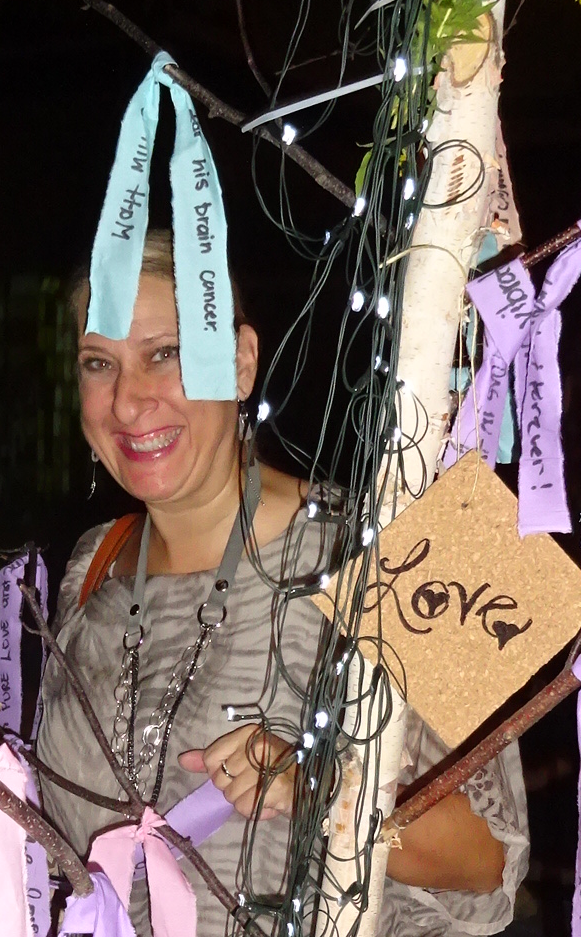 Several thousand ribbons were draped over the branches of the trees in the Wishing Garden. Set in a lot that was once a gas station the Wishing Garden was a collection of birth tree branches planted into pots with small white lights strong along the branches.
Visitors were invited to take a ribbon and write a wish and then tie it to one of the tree branches.
Hua believes that with all that energy; all those wishes collected in a single place – change was inevitable. Only those who tied a ribbon will know if there was a change – one can say however that there was a mood in the darkened space where you could smell the lake and not feel you were being intruded upon by the noise from Emmas Back Porch just yards away.
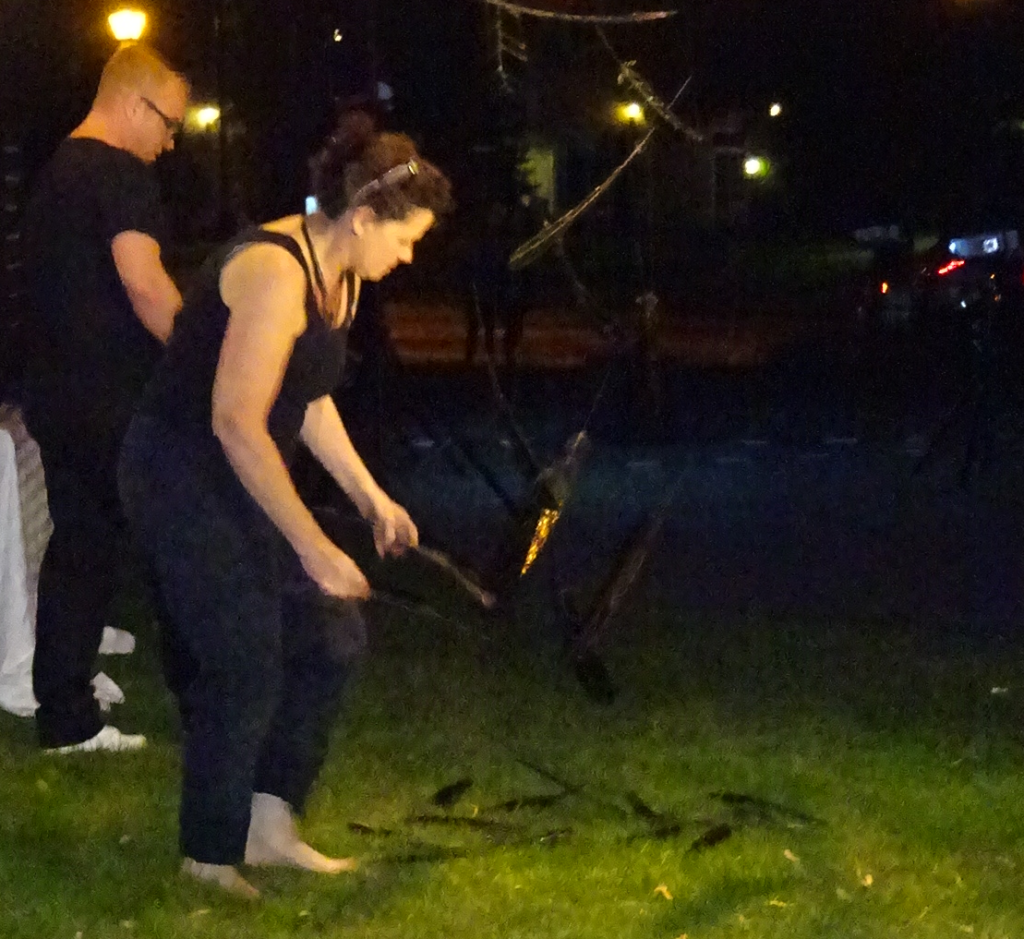 Tomy Bewick intoned in a strong passionate voice while Teresa Seaton spread the feathers about the ground “feathers spinning in the downdraft” The Seaton/Bewick event was more of a performance – and for those that listened there was a sense of trance as Bewick spoke ans Seaton moved around the space placing feathers fashioned out of stained glass on the ground while Bewick chanted
she’s walking down that road again
flying off the fumes
this highway life on a long enough stretch wears thin
Seaton would gently place a few stained glass feathers on the ground while Bewick continued …
watching the freebirds float above
feathers spin in the downdraft
wind kicks sand across face releasing strained tears
the rain makes the asphalt seem slick
the sheen of blacktop coated hopes slippery
you see the machinery from a distance
silhouettes like soldiers along a long abandoned flightpath
from a thousand miles the towers look like flamingoes
stilted sun refracts rainbows in cracked glass
It wasn’t dramatic but it drew you in as the Bewick voice continued to intone and the feathers took their place on the ground as Seaton stepped around gently
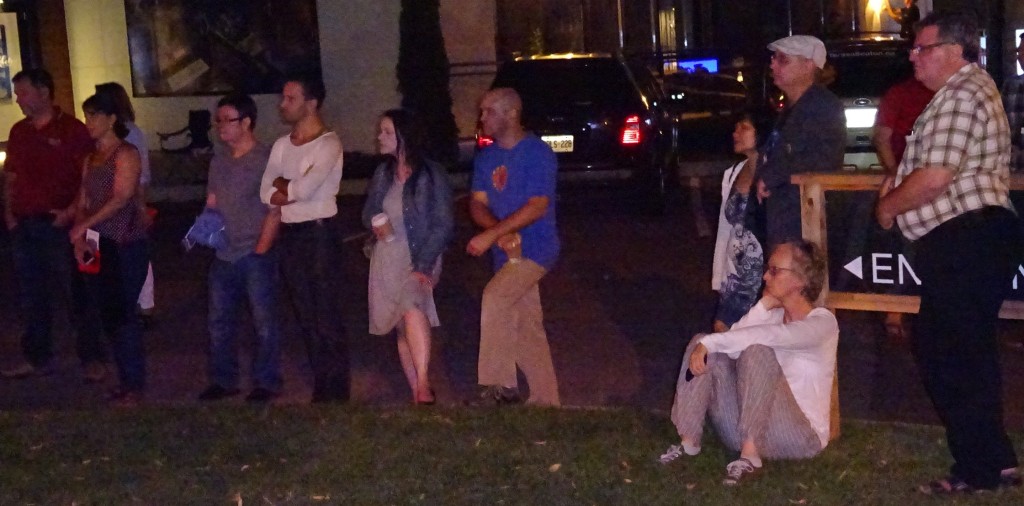 The audience didn’t move while Bewick and Seaton performed – they stood silent for a few moments when the performance ended – it was that kind of event. she’s walking down that road again and the fumes are getting stronger
the feathers falling faster
there is disaster on the horizon, stretched like the skeleton of industry
It was a fine performance given every hour. If you missed this – you really did miss something.
The problem areas – getting crowds out means promotion – some thought there wasn’t enough done. The location was very good – did the organizers create too much space?
They were able to set aside basically all of the Old Lakeshore Road but there weren’t enough artists to take up the space which left the event feeling it was a little thin on the contents side.
There were a lot of people at the event – it was hard to appreciate just how many because there was acres of space. At Village Square everything was crowded in – which made it seem very busy.
There could have been more artists – it takes time for this type of event to gain a foothold. This was the third event put on by the No Vacancy group.
 It was electric – it had energy and it had three dimensions – you left feeling better after looking at this piece of work. One of the problems they might want to give some attention to is the identity of the event. No Vacancy is the sort of umbrella name with each event given a different theme name each year. That gets a little confusing for the casual visitor.
The organizers do something few other events of this type do – they ensure that the artists are paid – and that can be a real grind when other than the beer garden and perhaps some revenue from the art market there is no revenue stream. There were sponsorship’s and the city did kick in some money – there may not have been enough.
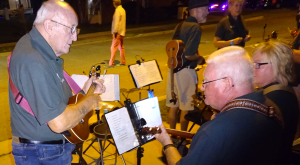 The Poacher Ukelele Band and the jugglers didn’t seem to fit into the art theme – but there were people who enjoyed both. The juggler was determined to make the event pay for him – which was outside the boundaries set by the organizers of the Supernova There was security that wasn’t needed – this was a very tame crowd that mixed well with the people that troop into Emma’s Back Porch.
But there was something missing – and the organizers are going to have to take some time in a month or so and think through what the recipe needs. A little more spice? Perhaps. More interesting artists and a program with a map of who was where. There apparently was a map – we didn’t see it until after the event.
Printing a program means getting advertisers – and that requires time which the organizers just didn’t have.
 The Art Market was in a smaller space this year and it had the crowds that in retrospect were what people missed overall. There was a very cruel, uncalled for comment from an artist who said ‘this was probably the last No Vacancy event. The artist who made the comment had submitted an event but was turned down and is reported not to have been prepared to make revisions to what was a collection of paintings that were for sale. Supernova was not at art sale – it was a collection of art illustrations – an event that you interacted with.
It was an uncalled for comment from an artist currently looking to the community for financial support.
After two outstanding successes the turnout this year is a bit of a setback. The arts are fickle – it doesn’t always turn out the way people hope it will
What the arts community has to do is be mature and stop going on about how great the event was – it wasn’t great. This year something was missing – the people who did all the grunt work will work it out.
 The Beer Garden was well situated – the band was loud – by the time this reporter was ready for an ale – the gates had closed – it was after 11 pm. The arts community has to call a spade a spade and work towards improving the event – what was great was the close to incredible support from the volunteers – who don’t get as much as a dime.
Be kind to Selena and Dean Eckersall – they put their hearts into this and deserve an opportunity to put the event on next year

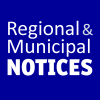 By Staff By Staff
September 18, 2014
BURLINGTON, ON
Lakeshore Road Lane Restrictions for Terry Fox Run – Sept. 20
 The northbound land of Lakeshore Road will be closed from Maple Avenue to the Halton Skyway Waste Water Treatment Plan between 8 a.m. to 1 p.m. on Sunday, Sept. 20 for the Terry Fox Run. The northbound land of Lakeshore Road will be closed from Maple Avenue to the Halton Skyway Waste Water Treatment Plan between 8 a.m. to 1 p.m. on Sunday, Sept. 20 for the Terry Fox Run.
The southbound lane will remain open.

 By Walter Byj By Walter Byj
September 18, 2015
BURLINGTON, ON
Despite what seemed like a lengthy and potentially controversial agenda, the September 16th meeting of the Halton District School Board went smoothly and relatively quickly. Items covered during the meeting were as follows;
Program Viability Committee
The Halton District School Board initiated a committee to examine program viability in both the English program and the French Immersion program and to make a recommendation to the Board no later than June 2015. The committee will be chaired by the Associate Director and will be composed of the Superintendent of Program, Superintendent of Student Success, System Principal of French Program, System Principal of School Program, Principals of dual track elementary schools, elementary single track English schools, elementary single track French Schools, French Immersion programs in High School, single track English programs in high schools and three trustees who currently sit on the French advisory committee.
A more detailed report on this item will be published later in the week.
Active Transportation
Active Transportation to school and work is defined as human powered transportation such as walking, cycling, wheeling, rolling and using mobility devices. Students and their families and staff who make active transportation a choice, over automobile travel, experience benefits in mental and physical health and well-being, are more prepared to learn and promote community connections.
 Burlington school board trustee Andrea Grebenc wants to see more walking to school. Reducing automobile use around schools by choosing active transportation modes and/or school buses/public transit improves air quality around schools for students, staff and the whole community. Supporting such active and sustainable travel choices reflects the principles of Ontario’s Foundation for a Healthy School.
Trustee Grebnec introduced a motion that will be debated at a future date.
Ontario Ombudsman
Effective September 1, 2015 the Ontario Ombudsman obtains jurisdiction for school boards. We have been asked by the Ombudsman’s office to supply a list of procedures the public can access to regarding challenges to Board procedures. Many of the Board’s procedures have been listed in the survey (transportation, discipline, suspension/expulsion, etc.), all prefaced by the Board’s Process for Public Concerns, attached to this document as an administrative procedure.
Background:
The Ontario Ombudsman under the Ombudsman Act has broad powers that include the ability to assist the public in matter of school boards’ jurisdiction. The general role of the Ombudsman is to respond to complaints and seek to resolve concerns raised by the public. The Ombudsman’s website (www.ombudsman.on.ca) details the breadth and depth of the work performed by that office.
Generally speaking, the Ombudsman will look to refer concerns to existing internal resolutions procedures (discipline appeals, human rights procedures, staff grievances). I believe that is the reason why we have been asked to supply an overview of our various procedures for public and parent concerns. The Ombudsman refers to itself as “an office of last resort”, meaning that other internal mechanisms for disputes should be exercised first. In the case where a complaint cannot be resolved, the Ombudsman determines whether an investigation is warranted and the Board is notified. The Ombudsman then investigates and reports publicly. It should be noted that the decisions of the Ombudsman are not binding and do not overturn decisions of the Board; however, it is my understanding that the wisdom and impartiality of the office is usually acknowledged with a review of the decisions.
Most of the items on the agenda were of the FYI nature and will be summarized in the near future. However, both the program viability committee and active transportation agenda items will be reported in more detail as they have the potential to be controversial and have a profound impact on the community.
 Walter Byj has been the Gazette reporter on education for more than a year. He is a long time resident of the city and as a parent has in the past delegated to the school board. Walter Byj has been the Gazette reporter on education for more than a year. He is a long time resident of the city and as a parent has in the past delegated to the school board.

 By Pepper Parr By Pepper Parr
September 18th, 2015
BURLINGTON, ON
A select group of people saw the Premier of Flash Flood – a Cogeco TV documentary on the flood that drowned parts of Burlington on August 4th 2014.
The 28 minute film will be shown on Cogeco Cable – channel 23 and 700 for HD
Airdates are:
Sun, Sep 20, 2015 20:00:00
Mon, Sep 21, 2015 17:00:00
Wed, Sep 23, 2015 19:00:00
Thu, Sep 24, 2015 15:30:00
Sat, Sep 26, 2015 17:30:00
Sat, Sep 26, 2015 22:00:00
Kristin Demeny was the lead reporter on the project that started the day the rains fell. She didn’t become aware of the flooding until around 4:30 that day by which time many people had everything in their basements floating in several feet of water.
 Kristin Demeny, Cogeco’s lead reporter on the August 2014 flood, was everywhere during the days after the flood. she was in the homes that were ruined and talked with hundreds of people whose lives had been forever changed. She was literally everywhere the first few days after and said she crawled through close a 100 basements to personally see and record the damage. “There was a woman in her 90’s – there with her son looking at all the ceiling tile that had come down in the basement. Her husband, no longer alive, had built the home for the two of them. It was heartbreaking to meet and talk to these people.”
Kristin did her first piece of broadcast reporting when she was 17 – “I fell in love with the business that day and have been in broadcast all of my career”. She includes her formal training at Loyalist College as part of that career.
She worked with CKWS in Kingston, the CBC television affiliate and proudly point to two stories that went network wide.
Demeny has been with Cogeco for five years.
Ben Lyman, Manager, Programming and Community Relations at Cogeco Cable, is recognized as the Executive producer of the documentary and said that “, we had documented so much footage at the start of the flood for our new local news program, we knew we could take it a step further.”
“At that time we decided we can produce what could be considered a historical documentary on this flood. That we would sit down with residents that were affected, let them tell their stories of how devastating this flood actually was to them and the city as a whole.
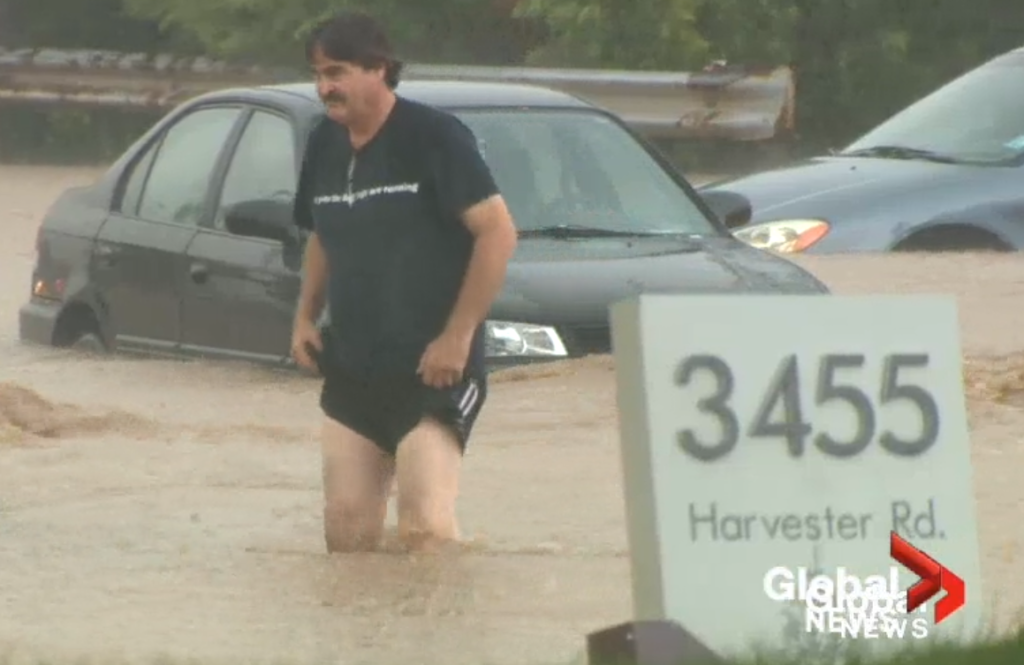 It was a flash flood – and the damage done was significant. Most of the city wasn’t even aware that it had happened – the rain fell in just one part of the city – 191 mm in a single day, “We knew a documentary was the way to move forward with this project. Kristin Demeny who had been our lead reporter in covering the flood was the lead producer for the project and with the help of Daniel Ricottone’s editing skills (he directed/edited TVCogeco’s Special on Chris Hadfield before he took command of ISS), we knew this duo would be able to tell the stories that needed to be told and create a lasting impact for our viewers.
“Once you watch this documentary, you really empathize with the victims of the flood and you realize how much work needed to be completed to get their lives back on track. As the station manager, I was very proud of the work our team completed in producing this doc. and was very pleased to see, in particular the vision I had for this flood documentary come to fruition this fall.”
It is certainly worth watching.

 By Pepper Parr By Pepper Parr
September 16, 2015
BURLINGTON, ON
Look in almost any car in a mall parking lot and you will see a car seat for a child in the back. Legally required and gratefully used by every parent – was the seat properly installed?
A the leading provider of Canadian car seats is sponsoring the Canadian Walmart Car Seat Clinic that will take place in the parking lot of the Walmart located at 4515 Dundas Street W on September 26 from 10 AM – 4 PM.
The sponsors are encouraging people to make an appointment on their website (www.gracobaby.ca/news), but we will also take drop-ins.
 There is a right way and a wrong way to install a car seat. You have to have one – might as well do it properly. Appointments will last for approximately 30 minutes (per car seat). The technicians will check and install seats for all ages and stages and any brand car seat. They encourage people to bring the manuals for both their vehicle and their car seat, along with their child if possible.
Graco Canada, the sponsors of the event, claim that 90% of Canadian car seats are installed improperly and/or misused. Common errors include a missing top tether, an improperly positioned chest clip, and loose harness straps, not to mention children riding in seats that do not accord with their weight, height, and age.
The simple habit of a child wearing a winter coat within their car seat can render the seat ineffective. The reality is that parents and caretakers love their children, but they don’t always know how to best protect them in a motor vehicle.

 By Pepper Parr By Pepper Parr
September 15, 2015
BURLINGTON, ON
Richelle Pain took a rather circuitous route to becoming a school board trustee. She originally thought about running in 1991 – it didn’t seem right to her at the time.
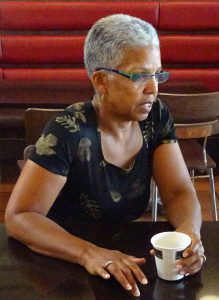 Richelle Papin describes the board she serves on as cohesive and that serving as a trustee takes up a lot more time than she expected. When she did run in 2010 and lost she found “losing was hard” At the time she had no special passion, no particular issue to run her campaign on – she just felt it was time for her to be in some form of public office.
She moved sometime after the 2010 race and now lived in ward 4 where she decided to run in 2014 and won the seat at the public board of education. She had grown to the point where she felt the school boards had to be accountable and she wanted to be part of the process that ensured accountability was in place.
Papin is more of a bureaucrat than an issues person – process matters to her which reflects her years of working in the public sector – currently as an information technologist.
Papin found the discussion around the French immersion programs all consuming and pointed out that in some western cities in Canada the second language is Spanish.
Papin describes the board she serves on as cohesive, “one that works well together” but she was not able to point to anything that she felt she had achieved in her first year as a trustee.
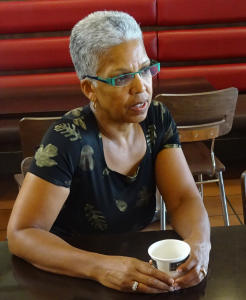 Papin, like every other trustee, said the board’s web site is “lousy”. As the only trustee with as full time job she finds that role requires more work that she thought it would take to get the job done.
The leadership conference the board held recently was one she appreciated – “I took quite a bit away from that”
Papin said she doesn’t have a strong policy on communicating with parents in her ward – she does have a Face book page but doesn’t get much traffic from it.
She wonders if our schools are what we think they are. She mentioned that Tuck, which has one of the best reputations in the city, had problems getting enough parent volunteers to help out at the annual Fun Fair.
Households today are not what they once were. The demands and strains on parents are a lot different – many parents don’t have the time needed to be fully active in their community. Those that commute aren’t back in Burlington until pretty close to 6 pm – and if they’re children are involved in some activity – a family around the table dinner often gets a pass.
Papin, like every other trustee, said the board’s web site is “lousy” – the current Director of Education has said $100,000 has been committed to upgrading the web site – but no one has attached a time line to the planned upgrade.
Papin admits that she doesn’t have nor does she want a high public profile. She feels her job is to look things over and be involved in the process of managing the issues before the board.
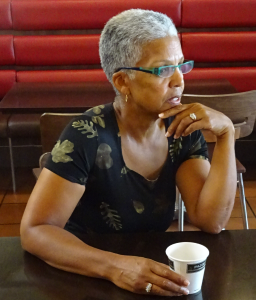 “That’s a good question” she said – “it isn’t something I, given any thought to – I am certainly going to finish this term.” While some trustees had an issue with schools being used for voting purposes – Pain doesn’t see any problem with such a practice. “I’m certainly not against it” she said and pointed out that the one parent who delegated at city council and met with people at the board of education is married to a police officer and that may have influenced some of her thinking.
Papin says she has a very good working relationship with the ward Councillor Jack Dennison, a former boss. “He copies me on anything that is even remotely related to school board matters”, she said.
Is there a political life beyond the school board for Papin? “That’s a good question” she said – “it isn’t something I, given any thought to – I am certainly going to finish this term.”
Papin was born in West Africa raised in Aldershot and attended Aldershot High school and earned a degree at the University of Guelph that had majors in English and sociology. “I gave some thought to becoming a teacher but life took me in another direction.”
Related articles
First in the series
Second in the series

 By Pepper Parr By Pepper Parr
September 15, 2015
BURLINGTON, ON
Close to the first thing city council did when they returned from a three month vacation away from city business was to go into a closed session to talk about the property the city owned and how it could be leveraged to get something going in the downtown core in terms of development that wasn’t just condominiums and retail operations that lasted a year and went bust.
Before the meeting went into closed session Councillors Taylor (ward 3) AND Mead Ward (ward 2) complained about getting a document several hours before the discussion was to take place.
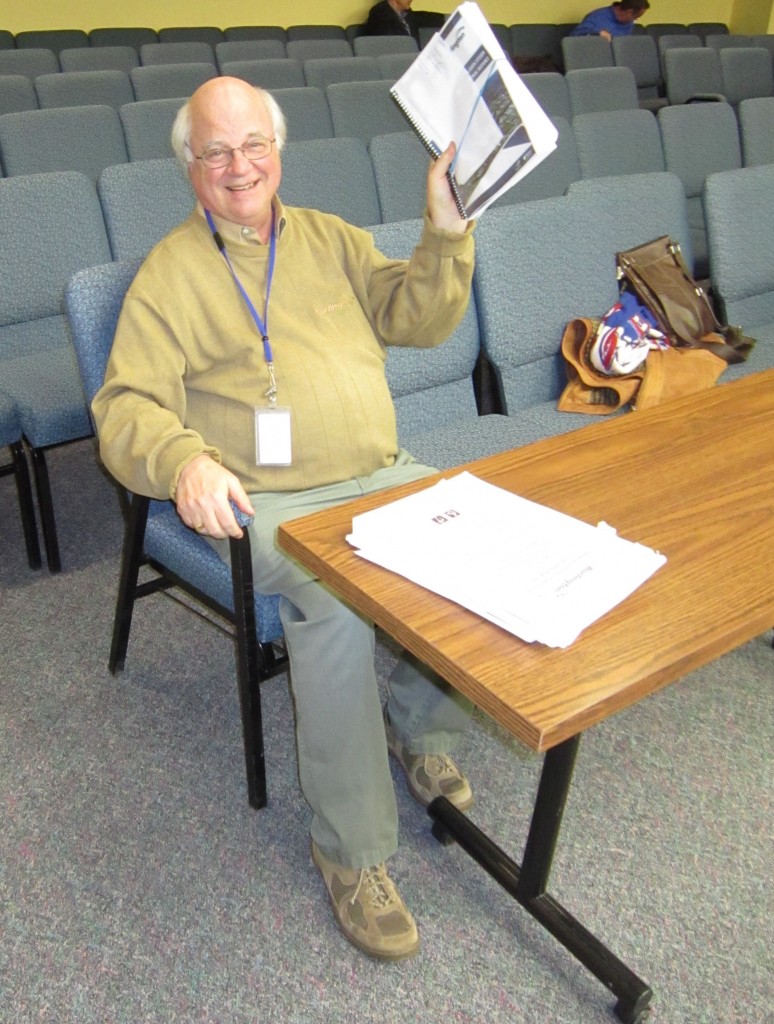 Councillor Taylor wants to see reports in his hands several days before he is asked to discuss the contents, His beef was over getting document just a few hours before he was to make comments. Taylor started out with a Point of Order he wanted to make and then asked why the policy that was agreed upon in 2014 to get material to council members on the Friday of the week before meetings take place allowing time to read the material and think it through.
“I don’t know what is expected of us” said Taylor, “there hasn’t been any time to read the material. Are we just going to receive and file it?”
Taylor went on to say that “knowledge is power and it looks to me as if you are going to go ahead and do what you want without any input from Council.
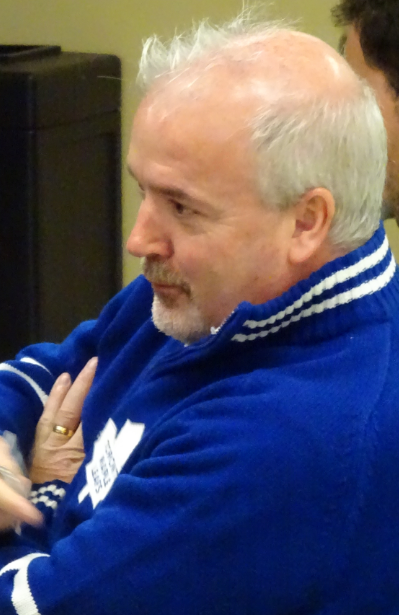 General Manager Scott Stewart was away on vacation which meant a report to be discussed wasn’t available in its final form until he returned to the city. General manager Scott Stewart responded by saying the report was meant to bring council members up to date on the thinking that was being done and to give a sense of where staff was going. “If we are offside” he said, “this was the time to let us know”.
Staff may have been offside and council may have let them know – but the public will never know – the session in which all this revealing was taking place was closed so the public.
City manager James Ridge explained that the documents they were seeing today was one of three pieces of information.
Council was getting a look at what staff felt could be done with property the city owned in the downtown core – parking lots for the most part.
Ridge went on to say that with staff thinking in front of council they could then talk about how all this would relate to the “core commitment” – an issue that has been kicked around for more than a decade with no results that are visible.
 Something along these lines was planned for Burlington’s downtown core – but McMaster stiffed the city when a nicer deal came along. The last great hope for the downtown core was when McMaster University got serious about locating a campus on the Elizabeth Street parking lot – McMaster had a change of heart, helped by a great deal on a piece of property and decided that the South Service Road was a pretty good location.
Ridge went on to explain that with the basic information clearly understood and agreed upon staff could begin doing some “growth modelling” that would get attached to the Strategic Plan which would in turn inform the Official Plan that is slowly working its way through a required revision.
While the process was clear enough Councillor Meed Ward wanted a little more information on why the documents in front of her were not available when they were supposed to be available.
Scott Stewart fessed up and explained that he had been on vacation and staff wasn’t able to get as much done without his presence. Stewart did add that changes were being made to the report as late as Sunday night.
All well and good – but the public still doesn’t know what the debate was about.
The web cast did not catch all the council member remarks – there was a comment from Councillor Sharman – he appreciated “you’re bringing this to us now”.
At some point the public might get to know what it was they talked about.

 By Pepper Parr By Pepper Parr
September 15, 2015
BURLINGTON, ON
City Manager James Ridge put it pretty clearly to council members when, after more than an hour of debate, he said they had to decide how the city wanted to treat coyotes.
Do you want them lopping along the streets of the city or do you want us to remove the animals from our urban spaces, he asked?
The sense from Council was that no one minded the animals on the streets just as long as they don’t hurt us – and that was the issue – there appear to be coyotes out there that do want to hurt us.
The worst concentration of coyotes appears to be in the east end of the city but they are spreading around and are now found in all the wards. In the rural part of the city Councillor John Taylor said “we have our own way of handling the coyotes” which appeared to be acceptable.
 There isn’t going to be a coyote kill like this in Burlington – unless someone is attached by one of the animals – there is considerable debate over whether or not coyotes actually attach people. What wasn’t acceptable is shooting the animals, Councillor Craven kept calling them critters. And it isn’t acceptable to bludgeon them to death either, which appears to be what happened to one of the pups belonging to a bitch coyote in the east end.
Ward 6 Councillor Blair Lancaster told of an evening driving home and there was a coyote in the middle of the road – she slowed down, drove past the animal and moved on then came upon a resident walking a small dog and suggested he might want to carry the dog.
The male resident said he wasn’t worried – he would just shush the coyote away.
Two Ministry of Natural Resources and Forestry staffers delegated and told council that there were no known incidents of coyotes attacking people. The Mayor Googled and came up with specific incidents in Ontario where people were apparently attached by a coyote.
The issues seems to be – what does a community do when a wild animal changes its behaviour and decides it will not co-exist with humans and attacks them instead.
The draft bylaw that was in front of the Standing Committee didn’t seem to provide an answer to that question and so it was deferred to the next cycle of Standing Committee meetings.
 A coyote that has apparently gone rogue in the east end of the city lost at least one of her pups to a public that wants that specific coyote out of the community Councillor Paul Sharman has what he called a rogue coyote in his ward that had chased a young boy on his bike and another situation where a coyote had circled someone driving a jeep.
Council was meeting to debate a proposed by law that none of the members of council had seen more than a half day before council met.
The end result was to defer the debate on the bylaw – which was going to make it illegal to feed animals or fowl on public property.
What people did on their own property wasn’t something council could do anything about – which didn’t do much for the two woman, Kelly Rosbrook and Jennier Glenn of ward 2 – they had a local resident feeding the coyotes, the pigeons, the geese and apparently anything else that was hungry. They showed a video of vermin scooting through their back yards.
 The trumpeter swans can be fed on public property – but only by people with a license to band them for scientific purposes – there are only eight people who can do that in Burlington. The draft by law was to prevent people from feeding wild life on public property – there is to be an exception – the people wanting to restore the Trumpeter Swans were going to get an exemption – however it was to be limited to just the eight people who have a license to band and record data on the swans.
Councillor Craven had concerns over the number of people he believes are feeding the swans. He commented that anyone feeding swans in LaSalle park had better have their banding license with them.
There is more to this story. Stay tuned.
Female coyotes are properly described as bitches

 By Staff By Staff
September 14, 2015
BURLINGTON, ON
Dozens of art ventures will appear on the Old Lakeshore Road, immediately outside, adjacent to and across the road from Emma’s Back Porch the evening of Friday, September 18th beginning at 7 pm – the installations will be in place until just after midnight and then disappear just as quickly as they appeared.
It will be a Supernova – a now annual event that began in 2013 at the Waterfront Hotel where new ground was broken in the Burlington arts world.
Year two for what is known as No Vacancy, which is given a different title each year took place at the Village Square when 3500 people showed up. Fortunately the Fire Marshal wasn’t aware of the crowd – he might have shut the event down.
During the next few days the Gazette will tell you a little bit about each participant – there are about 20+ of them – all up for one enchanting evening.
We start with:
Teresa Seaton is working with Tomy Bewick
 Teresa Seaton creates highly original, dynamic Stained Glass for galleries and private commissions. Her uniquely sculptural work is a trademark; featuring multi layers of panels and glass with spun wire incorporated as a structural element and design accent. Teresa Seaton studied Graphic Design at Sheridan College and obtained the degree, BFA in drawing and sculpture from York University. Her career in design led her to positions as Senior Designer, Associate Creative Director and Creative Director with clients from Toronto to New York. Teresa studied the craft of stained glass with Paul Beatty and has operated as a full time artist since 2010. In 2007 she became chair for Art in Action. She helped define Art in Action Burlington Studio Tour as a go to cultural event that showcases many talented local artists and artisans and brings a growing number of art lovers to the community. In 2013 she opened her Studio & Gallery in Burlington. As well as giving her a place to showcase her own artwork she has opened her Gallery to other Canadian artists by showcasing them for two months at a time. Teresa Seaton creates highly original, dynamic Stained Glass for galleries and private commissions. Her uniquely sculptural work is a trademark; featuring multi layers of panels and glass with spun wire incorporated as a structural element and design accent. Teresa Seaton studied Graphic Design at Sheridan College and obtained the degree, BFA in drawing and sculpture from York University. Her career in design led her to positions as Senior Designer, Associate Creative Director and Creative Director with clients from Toronto to New York. Teresa studied the craft of stained glass with Paul Beatty and has operated as a full time artist since 2010. In 2007 she became chair for Art in Action. She helped define Art in Action Burlington Studio Tour as a go to cultural event that showcases many talented local artists and artisans and brings a growing number of art lovers to the community. In 2013 she opened her Studio & Gallery in Burlington. As well as giving her a place to showcase her own artwork she has opened her Gallery to other Canadian artists by showcasing them for two months at a time.
teresaseaton.ca/
Juliana LaChance focuses on avante garde themes
 Juliana LaChance is a Hamilton based painter specializing in original acrylic, multimedia art of contemporary, avant garde themes. Juliana LaChance is a Hamilton based painter specializing in original acrylic, multimedia art of contemporary, avant garde themes.
Her paintings and art have been exhibited throughout southern Ontario and her work can be found on instagram, facebook, tumblr, youtube.
She has produced four solo albums that you can listen to on her youtube channel by searching Juliana Lachance
She works in a small, cozy studio where she records, creates and paints her heart out in Hamilton, ON
julianalachance.com
Courtney Lee is a newcomer to this art form – works in water colour on Yuppo paper.
 Courtney Lee is a Toronto based Artist. She has only recently begun to paint professionally with her first show in the summer of 2014. She works in watercolour on Yupo paper, two materials that are both very demanding, but when combined have an organic chemistry that blossoms into something bold and playful. She pairs these bold, colourful paintings with layers of intricate geometric paper cuts creating an intriguing juxtaposition of colour and shape, in other words “contained chaos”. These paintings are an expression of her interest in natural science and the beauty found in organic forms. For Courtney, The ultimate example of these organic forms for is the nebula and the creation of stars in space. The geometric context that she gives these spontaneous paintings refers to her interest in sacred geometry (such as the Fibonacci sequence) which is the lens through which she tries to understand the mysteries of unexplored space. Courtney Lee is a Toronto based Artist. She has only recently begun to paint professionally with her first show in the summer of 2014. She works in watercolour on Yupo paper, two materials that are both very demanding, but when combined have an organic chemistry that blossoms into something bold and playful. She pairs these bold, colourful paintings with layers of intricate geometric paper cuts creating an intriguing juxtaposition of colour and shape, in other words “contained chaos”. These paintings are an expression of her interest in natural science and the beauty found in organic forms. For Courtney, The ultimate example of these organic forms for is the nebula and the creation of stars in space. The geometric context that she gives these spontaneous paintings refers to her interest in sacred geometry (such as the Fibonacci sequence) which is the lens through which she tries to understand the mysteries of unexplored space.
Jefferson Campbell-Cooper has been featured in Nuit Blanche Toronto twice
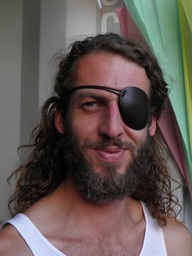 From drawing to sculpture to performance, artist Jefferson Campbell-Cooper’s works navigate the changing world around us. His practice includes such projects as collecting recycling for the City of Toronto with home-made machines, transforming a tourist train into a subway using sound installation, and developing large-scale social mapping projects with the cities of Windsor, Kitchener, and Toronto. Campbell-Cooper has been featured in Nuit Blanche Toronto twice, and is part of the public collections of the City of Kitchener and the University of Guelph. Numerous residencies have led to site specific projects in New Mexico, the Yukon, Newfoundland and Connecticut. Exhibiting internationally, he most recently completed projects in Athens, and Geneva. He received his BFA from the Nova Scotia College of Art and Design, Halifax, and MFA from the Meadows School of the Arts, Dallas, Texas. From drawing to sculpture to performance, artist Jefferson Campbell-Cooper’s works navigate the changing world around us. His practice includes such projects as collecting recycling for the City of Toronto with home-made machines, transforming a tourist train into a subway using sound installation, and developing large-scale social mapping projects with the cities of Windsor, Kitchener, and Toronto. Campbell-Cooper has been featured in Nuit Blanche Toronto twice, and is part of the public collections of the City of Kitchener and the University of Guelph. Numerous residencies have led to site specific projects in New Mexico, the Yukon, Newfoundland and Connecticut. Exhibiting internationally, he most recently completed projects in Athens, and Geneva. He received his BFA from the Nova Scotia College of Art and Design, Halifax, and MFA from the Meadows School of the Arts, Dallas, Texas.
jeffersonsculpture.com
Mary Ma’s work explores landscape phenomenology.
 Working primarily in video projection, installation, sculpture, and sound, Ma’s work explores landscape, phenomenology, and moments of contact within collective experience. She has exhibited at the Scotiabank CONTACT Photography Festival (Toronto), Place Gallery (Portland OR), and recently presented a solo exhibition at Katharine Mulherin Contemporary Art Projects (Toronto). Upcoming exhibitions include Scotiabank Nuit Blanche 2015, and CAFKA’s 2016 Biennial in Kitchener Ontario. Ma holds a BFA in Sculpture and Installation from OCAD University. Working primarily in video projection, installation, sculpture, and sound, Ma’s work explores landscape, phenomenology, and moments of contact within collective experience. She has exhibited at the Scotiabank CONTACT Photography Festival (Toronto), Place Gallery (Portland OR), and recently presented a solo exhibition at Katharine Mulherin Contemporary Art Projects (Toronto). Upcoming exhibitions include Scotiabank Nuit Blanche 2015, and CAFKA’s 2016 Biennial in Kitchener Ontario. Ma holds a BFA in Sculpture and Installation from OCAD University.
More work can be found on her website at www.maryma.ca
Judy Graham is a multi-media artist who has exhibited her work both nationally and internationally.
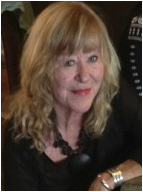 Judy Graham is a multi-media artist who has exhibited her work both nationally and internationally. Currently, her drawings can be seen at Artspace Gallery in Buffalo, N.Y. Judy’s projects have been reviewed in such publications as The Globe and Mail, The St. Catharines Standard, Now, and Artvoice. Ms. Graham teaches in the Visual Arts Department, Marilyn Walker School of Fine and Performing Arts, Brock University. Judy Graham is a multi-media artist who has exhibited her work both nationally and internationally. Currently, her drawings can be seen at Artspace Gallery in Buffalo, N.Y. Judy’s projects have been reviewed in such publications as The Globe and Mail, The St. Catharines Standard, Now, and Artvoice. Ms. Graham teaches in the Visual Arts Department, Marilyn Walker School of Fine and Performing Arts, Brock University.
There are more – tune in tomorrow.

 By Staff By Staff
September 10, 2015
BURLINGTON, ON
That we even have a World Suicide Prevention Day is painful – we shudder when we hear the words and try to brush away the thought when we think of families we know that have experienced a loss.
The Burlington Community Foundation (BCF) Mental Wellness Alliance is sharing information in an effort to raise awareness and discuss suicide prevention.
Some of the difficult truths about suicide in our communities include:
– Suicide is the 2nd cause of death in young people
– 1 in 5 Ontarians experience mental health problems and addictions
– 1 in 4 teens and young adults in their 20’s will experience mental health issues in Ontario
– 71% of family physicians ranked access to psychiatrists in Ontario fair to poor
– Youth and families can wait for months or up to 2 years for services
– Joseph Brant Hospital Child and Adolescent Psychiatry Clinic reports:
– 16% increase from 2010-11 to 2011-12 in case load
– 31% increase for the average wait time for assessment – 47 days
 As outlined in BCF’s Vital Signs Reports, mental health issues are growing. To address this imminent need BCF launched the Mental Wellness Alliance in April 2015 by bringing together a diverse and knowledgeable group of over 55 leaders from a broad cross-section of mental health perspectives. These include practitioners, policy makers, program service delivery organizations, civic leaders, interest groups, partners, caregivers and individuals living with mental health issues. The participants are from Halton Region through to Hamilton. BCF is leading the efforts and recognizes these “communities” are interconnected from both a needs and delivery of programs/services perspective. As outlined in BCF’s Vital Signs Reports, mental health issues are growing. To address this imminent need BCF launched the Mental Wellness Alliance in April 2015 by bringing together a diverse and knowledgeable group of over 55 leaders from a broad cross-section of mental health perspectives. These include practitioners, policy makers, program service delivery organizations, civic leaders, interest groups, partners, caregivers and individuals living with mental health issues. The participants are from Halton Region through to Hamilton. BCF is leading the efforts and recognizes these “communities” are interconnected from both a needs and delivery of programs/services perspective.
Brian Hansell, co-chair of the BCF Mental Wellness Alliance knows all too well how devastating suicide can be. His son Paul lost his life to suicide in December 2010. To help ensure that other families don’t face the same tragedy and to do something in memory of Paul, Brian founded the Paul Hansell Foundation. Its mandate is to promote programs aimed at the mental and emotional wellbeing of youth.

 By Staff By Staff
September 10th, 2015
BURLINGTON, ON
 Mayor Golding will take part in the Kick off for a campaign to increase the use of alternate forms of transportation – and less use of cars for short trips. The process has begun – the attempt to change the culture in the city and leave the car at home and choose active and alternative transportation instead is now a challenge from the office of the Mayor.
Billed as the Think Outside the Car Challenge, it will run from September 15th to – October 30th.
Many of the trips people take in Burlington are within a very short distance and are the ideal distances to cycle, walk or hop on a Burlington Transit bus. These alternative modes of transportation not only promote a healthy lifestyle but also save money on the cost of gas, parking and have very little impact on our air quality.”
To participate in the challenge:
1. Ask a friend or family member to take a photo or video of you using alternative transportation when you would have normally taken your vehicle. Share on social media using #ThinkOutsidetheCar.
2. Challenge three friends, family members or co-workers to choose alternative transportation instead of using their vehicle.
3. Be part of the change.
Campaign Kickoff Event
On Tuesday, September 15th , students at M.M. Robinson High School will be part of the kickoff event.
 Burlington MPP Eleanor McMahon has been a strong Share the Road advocate – she now wants people to make more use of bikes and public transit. Eleanor McMahon, MPP Burlington and Danijel Ozimkovic, Transportation Technologist at the City of Burlington will be talking part in the event.
“Travelling by car is very popular in Burlington,” said Vito Tolone, acting director of transportation at the City of Burlington. “Ninety per cent of all trips within our city are made with an automobile. If we are going to reduce traffic congestion and create a greener city, the entire community needs to work together and consider other forms of transportation.”

 By Pepper Parr By Pepper Parr
September 9, 2015
BURLINGTON, ON
The second in a series on the Burlington trustees on the Halton District Board of Education.
Burlington has four seats on the 11 member Halton District School Board. All are female; one was acclaimed.
Each had their own reasons for running. Some had a clear objective others were a little more nonchalant about public service.
The three new board of education members were somewhat overwhelmed with the steep learning curve but have for the most part have settled in. None however has yet made a significant mark on what the board does. There have been issues: The Pineland school concerns; French language classes, starting times, using the schools as voting stations – each Burlington trustee has participated in the discussions – but our reporter Walter Byj, wasn’t able to point out anything significant in the way of a contribution from any of the new Burlington trustees on policy and the thinking as to how the schools should be run.
The one thing this current board did do was put in place a system that records every vote that takes place – the public knows in an instant how a trustee voted on any particular motion, which is more than one the public gets to know about how members of city council votes.
Both Walter Byj and I jointly interviewed all four Burlington trustees. Three were first time members of the Board – Amy Collard is serving her second term – she was acclaimed in both elections.
 Andrea Grebenc – a woman seldom at a loss for words. Andrea Grebnec ran as a trustee when she found she didn’t like the way the Alton school boundary review was handled. Now that she is on the Board she has concerns with triple stream schools. She is also a strong believer in parents being able to have all their children in the same elementary school. she thought that at one point she would have three children attending three different schools.
Grebnec did some of her elementary classes at a Catholic school and then attended Lester B Pearson. Her Father taught at MM Robinson; her Mother was a librarian.
We leaned from Grebnec that the Burlington trustees never caucus – but are nevertheless described by Grebnec as a collaborative team – a term she uses to describe the full Board.
Grebnec give current chair Kelly Moss full marks for the nurturing and support she was given as she learned the ropes. She doesn’t give Burlington’s ward 3 Councillor John Taylor any marks – says she has never heard from the man even though she was elected by voters in ward 3. So much for city – board of education cooperation.
Andrea, who covers wards 3 and 6 has a solid working relationship with city Councillor Blair Lancaster. “I once did some one-one-one work with her on personal grooming – so we know each other quite well.”
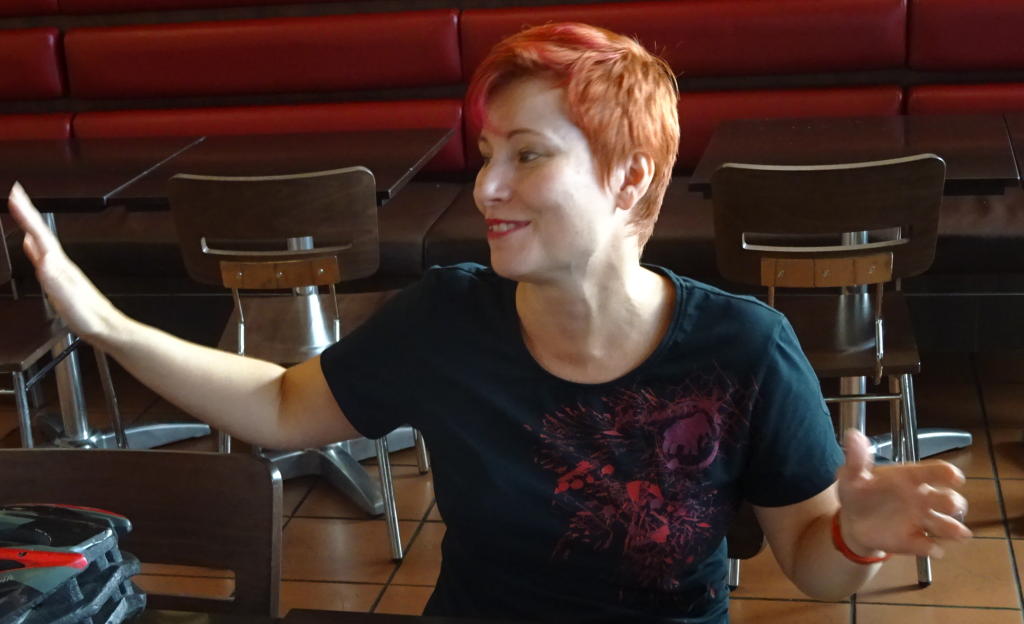 Andrea Grebenc – trustee for wards 3 and 6 – when she gets going – there is no stopping her. Board issues for Grebnec? The web site –“ it doesn’t work – close to impossible to find anything – even though you know it is in there somewhere” says Grebnec, who has a background in IT. She thinks the website the board has in place now is what they “created originally and just kept adding to the thing.”
We have yet to come across anyone who has anything good to say about the web site – David Euale, the retiring Director of Education, told the Gazette that $100,000 has been allocated for an upgrade to the web site – which is nice. The disturbing thing is that an institution responsible for the education of our youth – people who will be going into a world where the flow of information and the use of information is foundational – does not itself have a useful web site.
Whoever the trustees decide to hire needs to be on top of this kind of thing. The communications people within the administration need a sound talking to for permitting such a lousy system to be in place.
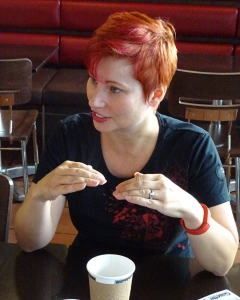 Andrea Gebenc, trustee for wards 3 and 6 explains a point she wants to make during an interview. Grebnec wants to see more walking and bicycle use; she wants to “get the kids out of the cars”. She maintains that the boards, perhaps unwittingly, have been telling people to drive to school. “we tell them how the traffic circle works, we tell them where they are to drop off their kids – we are telling them they are bad parents if they don’t drive their kids to school. Grebnec wants to see a change in the culture and has advised her colleagues that she will be bringing a motion to a future board meeting suggesting changes.
Grebnec points out that there is a lot of fear in the community about just how safe our children are – “safe streets have children on them” she adds and when children are on the streets with other children they play – which is a large part of what childhood is all about.
She talks about walking school buses – which amounts to a bunch of people who might normally take the school bus – walking to school as a group instead.
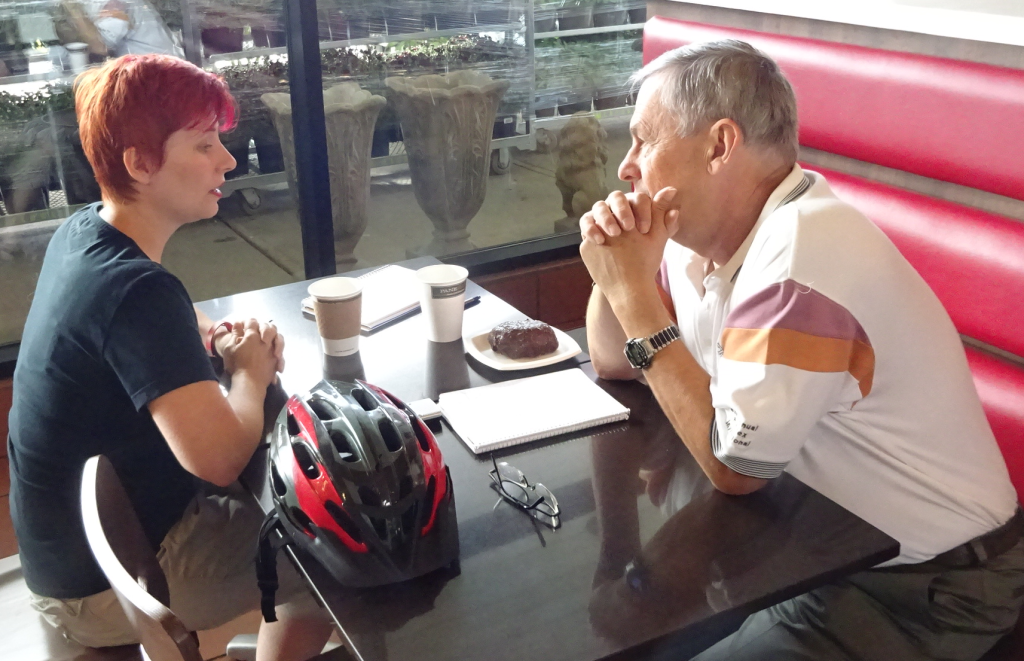 Trustee Andrea Grebenc talks with Gazette education reporter Walter Byj about the job she got herself into when she wanted to see some changes at the school her children attend. There is a feistiness to Andrea Grebnec. Now that she has a year of service as a trustee behind her – I think the community is going to hear more from her.
To follow – short profiles on Richelle Papin and Leah Reynolds, the other two first term Burlington school board trustees.
We will follow that up with a look at what Amy Collard has been doing on the school board.
Related links:
Choosing the new Director of Education

 By Pepper Parr By Pepper Parr
September 8, 2015
BURLINGTON, ON
The first in a series on the Burlington trustees on the Halton District Board of Education.
In the next 120 to 150 days 11 people are going to make a choice that could change in a very meaningful way how the municipalities of Burlington, Oakville, Milton and Halton Hills are seen by the rest of the province and perhaps the rest of the country.
Trustees Kelly Amos, Oakville; Amy Collard, Burlington; Joanna Oliver, Oakville; Leah Reynolds, Burlington; Donna Danielli, Milton; Andrea Grebenc, Burlington; Ann Harvey Hope, Oakville; Richelle Papin, Burlington; Kim Graves, Milton; Jeanne Gray, Halton Hills and Tracey Ehl Harrison, Oakville are the elected members of the Halton District School Board and they as a group will vote on who they want to lead the development, administration and delivery of education in the Region.
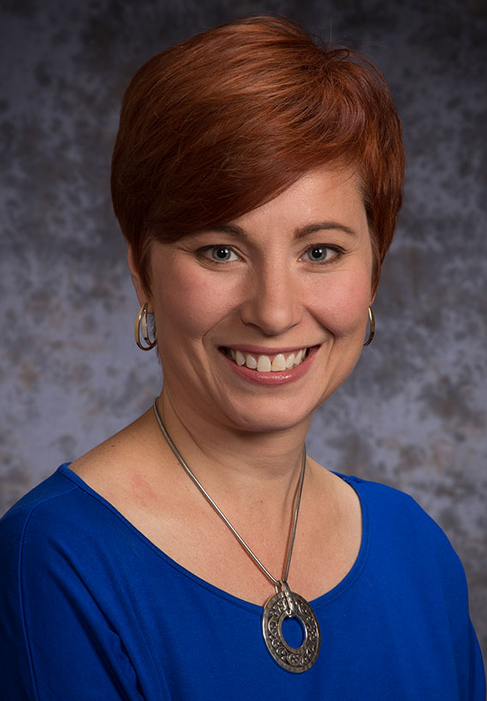 Andrea Grebnec – Burlington Trustee 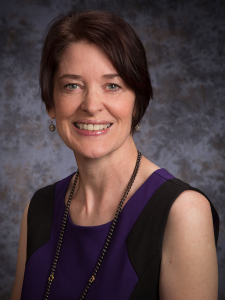 Amy Collard – Burlington Trustee 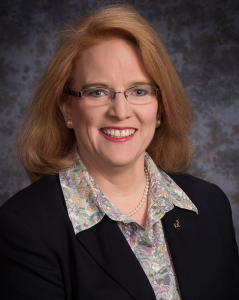 Anne Harvey Hope – Oakville trustee Burlington let itself get caught up in the promotional hype of a magazine that chose the city as the best mid-sized city to live in. That Burlington was chosen was due in no small measure to the persuading former Mayor Cam Jackson laid upon the publishers of the magazine. Jackson convinced them to see Burlington as a separate entity and not lump us in with Hamilton – when that was done Burlington began to look much much better.
For a time that line “the best mid-sized city in Canada” was parroted by members of city council as if it was something we had earned – it was an award made up by a magazine to promote their circulation,
There are many many things about Burlington that are positive. But the city doesn’t have much in the way of a provincial or a national profile. Oakville is known for all the people with bags of money that live there and Milton is known for its explosive growth – they also have an Olympic grade Velodrome that was their benefit from the Pan Am games – all Burlington managed to get was a cheque for renting out the City View Park for Pan Am soccer practice.
Burlington seems to want to focus on its geography – the Escarpment to the north and the lake to the south and that’s about it. A nice, for the most part, comfortable community that has its share of problems that it seems to muddle through.
Hamilton is entering a phase that has some buzz to it – the end of their steel manufacturing stage has begun and they are in the process of re-inventing themselves. Two decades from now Hamilton will be THE place to live in Ontario.
As for Burlington – there is an opportunity that is now in the hands of the 11 people who have been elected as school board trustees.
Current Director of Education for the Halton District School Board David Euale has resigned and the search for his replacement is now down to the short list.
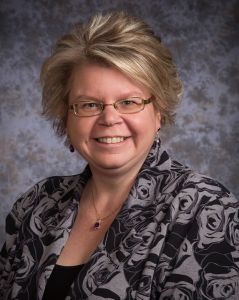 Donna Danielli -Milton trustee 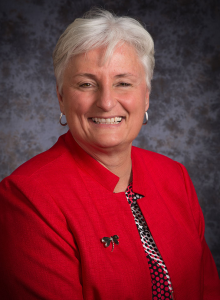 Jeanne Gray – Halton Hills trustee Burlington is the kind of city people like to live in – it is safe, not particularly exciting but a reasonably easy place from which to get to Toronto. But is there a really strong reason to live in Burlington? – it certainly isn’t the cost of housing.
But Burlington could be the city that has the best public education school board in the province. Schools matter to parents – just look at the number of private schools in the Region.
Those eleven school board trustees have the opportunity to put Halton on the map – and by extension Burlington as well.
There are schools in this city that parents will actually cheat to get their children into – Tuck is one of them. Why do they do that? Because the principal of that school has made it one of the best in the city.
Why is Nelson High School the superb institution that it? Why is Bateman such an excuse for a high school? (That is a person opinion – I have had dealings with the leadership at that high school and this is an opinion column.)
It all comes down to leadership – there are great leaders in the public education system and they are always looking for a great board of education to work for – there aren’t a lot of them around.
Imagine what could happen if the trustees made it known that they want the best person there is to lead their board. To say publicly and loudly that they want an education leader who will not only improve our rankings but develop schools where every principal is not only a leader but an innovator.
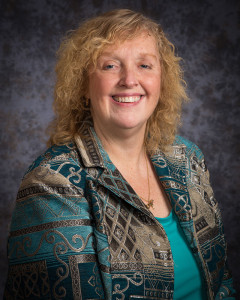 Kelly Amos, Oakville trustee and current chair of the board 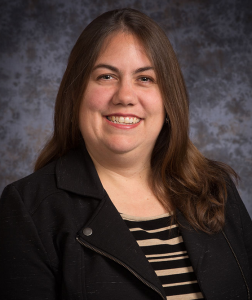 Kim Graves, Milton trustee 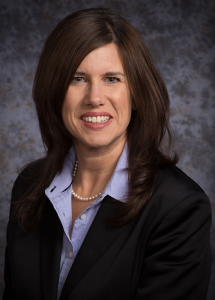 Leah Reynolds – Burlington trustee A director that knows how to motivate and to take risks and create schools that students are excited to go to each day. A leader that has standing and a profile in the community – a leader that has a grip on the changes taking place in the flow of information that young people have coming at them.
A leader that develops high schools that produces Rhodes Scholars – Halton has apparently produced one Rhodes Scholar.
A leader that has high schools that graduate students who are almost automatically accepted at universities because they came out of the Halton school board system.
There is a line in our Bibles about Daniel from which the phrase “Dare to be a Daniel” has come. “God gave Daniel a special task. He boldly accepted the assignment and God used him to change an entire nation!”
As our trustees begin their task of determining who the next Director of Education should be one hope that they will dare to be Daniels.
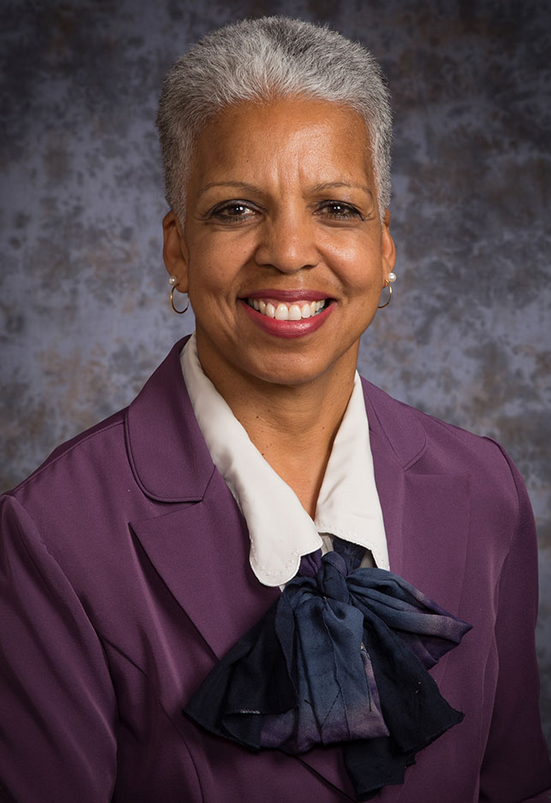 Richelle Papin – Burlington trustee 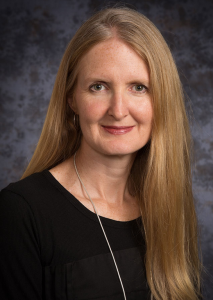 Tracey Ehl Harrison, Oakville trustee A significant step has already been taken in creating a leadership team at the board in the appointment of Jaqueline Newton who has been appointed the Superintendent of Education. Ms Newton was the woman tasked with opening Hayden High school – she did a superb job there and we believe will do an equally superb job with the Board. A Director of Education made from the same mold would be nice.
There are eleven people in the Region who have the power to do just that. If they aren’t all that close to their Bibles perhaps they can fall back on the Nike advertising slogan – Just do it!

 By Staff By Staff
September 5, 2015
BURLINGTON, ON
It was blistering hot out there today and it isn’t going to be any cooler on Sunday – this heat is expected to stay with us until Monday.
 The lake is often shrouded in fog = as ship works its way toward the entrance of Hamilton harbour – passing the Burlington pier Maximum temperatures near or above 30 degrees and minimum temperatures near or above 20 degrees are expected through Monday. Meanwhile, peak humidex values near 40 are forecast for Sunday and Monday. These conditions may produce much discomfort for those who may not have access to a cool or air-conditioned place.
It is expected to remain very humid Tuesday, with maximum temperatures in the high twenties.
While extreme heat can put everyone at risk from heat illnesses, health risks are greatest for – older adults – infants and young children – people with chronic illnesses such as breathing difficulties, heart conditions or psychiatric illnesses – people who work in the heat – people who exercise in the heat – people without access to air conditioning and – homeless people.
 Drink plenty of liquids especially water before you feel thirsty to decrease your risk of dehydration. Thirst is not a good indicator of dehydration. Drink plenty of liquids especially water before you feel thirsty to decrease your risk of dehydration. Thirst is not a good indicator of dehydration.
Take a break from the heat by spending a few hours in a cool place. It could be a tree-shaded area, swimming facility or an air-conditioned spot such as a public building, shopping mall, grocery store, place of worship or public library.

 By Staff By Staff
September 4, 2015
BURLINGTON, ON
A probable human case of the West Nile virus (WNV) illness has been identified in an adult from the Town of Oakville. This is the first human case for Halton in 2015.
Dr. Hamidah Meghani, Halton Region Medical Officer of Health pointed out that “80 per cent of people infected with West Nile virus will have no symptoms, others will have West Nile fever consisting of fever, headache, muscle ache and a rash. If residents are concerned, I’d encourage them to visit their health care professional.”
 This is how West Nile Virus is usually transmitted Urban areas are more likely to have mosquitoes that carry WNV. The types of mosquitoes that transmit WNV to humans most commonly breed in urban areas in places that hold water such as bird baths, plant pots, old toys, and tires.
The following are steps that residents can take to protect themselves and their families from mosquitoes:
• Cover up. Wear light-coloured, long-sleeved shirts and pants with tightly-woven fabric.
• Avoid being outdoors from early evening to morning when mosquitoes are most active and likely to bite, as well as at any time in shady, wooded areas.
• Reduce mosquito breeding sites around your home by getting rid of all water-filled containers and objects. Change the water in bird baths at least once per week.
• Use an approved insect repellent, such as one containing DEET or icaridin.
• Make sure your window and door screens are tight and without holes, cuts or other openings.
As part of its ongoing West Nile prevention program, Halton Region staff continually monitor areas of standing water, eliminate potential mosquito breeding sites and larvicide when mosquito larvae are found. A map showing the locations of standing water sites that have had larvicide applied is available at halton.ca/wnv.

 By Pepper Parr By Pepper Parr
September 3, 2015
BURLINGTON, ON
It’s getting tight people.
The high school students have a place to go next Tuesday and the Catholic students know where they are going to be as well. But the public elementary teachers are still jaw boning.
The doors will be open and the teachers are going to do the job they were trained to but they are not going to attend meetings nor will they be doing any of the administrative tasks that are not directly related to teaching.
 Teachers reminding the public just how much they do – they are hired to teach. The provincial government seems to have forgotten that teaching is not just the time spent with students in a classroom; there is paper marking to be done and all the tasks needed to keep curriculum material fresh and relevant. The internet has radically changed the flow of information and it is a monumental task to keep up.
Deb Matthews, President of the Treasury Board, released the following statement on the status of contract negotiations between the Government of Ontario and the Ontario Public Service Employees Union (OPSEU):
“I’m pleased that the parties have agreed to shift their efforts from negotiating essential services back to bargaining a collective agreement. We expect these conversations to begin next week.
Our government remains firmly committed to continuing to work with OPSEU to reach a fair agreement that balances the interests of employees with the need to provide sustainable and affordable public services, both now and in the future.”
I didn’t see the needs of the students anywhere in that statement – I thought schools were all about the children.

 By Staff By Staff
September 3, 2015
BURLINGTON, ON
Changes on Route 1: Detours because of the Labour Day parade in Hamilton. detour on Labour Day – Monday, Sept. 7, 2015
 And the union makes them strong – Canada Auto workers – marching in a Labour Day parade Due to a Labour Day Parade in downtown Hamilton, Burlington Transit’s Route 1 will need to detour from approx. 9:30 a.m. – noon as follows:
Route 1 West (into Hamilton)
Regular routing to York Blvd. and Dundurn St.
• Right at Dundurn
• Left at Main St.
• Right at Locke St.
• Left at Bold St.
• Right at James St.
• Left at Augusta St.
• Left at John St.
• Left at King St.
Route 1 East (out to Burlington)
From King and John St.
• Left at James St.
• Right at Hunter
• Right at Locke St.
• Left at King St.
• Right at Dundurn St.
• Left at York St.
• Resume regular routing…

 By Staff By Staff
September 2, 2015
BURLINGTON, ON
The folks at the Mountsberg Conservation Area are going to use the coming weekend to celebrate one of nature’s most incredible, and frequently misunderstood, creatures – the vulture.
Believe it or not there is an International Vulture Awareness Day.
 Turkey vultures have a really big wing spread which allows them to float above their prey for quite a while. Vultures all over the world are facing ecological challenges brought on by loss of habitat and pressures from human activity. This is your chance to learn about these fascinating animals, including the Turkey Vulture, Ontario’s only native vulture species. Park visitors will have the opportunity to learn all about how beneficial vultures are to the environment, and how intelligent and social they can be.
The day will include:
 You get to meet Casey and Buzz – face to beak. He isn’t exactly pretty is he? Vulture-themed crafts and colouring
Vulture games
Vulture displays
Opportunities to meet the Raptor Centre’s residents Turkey Vultures, Casey and Buzz, up close and ‘nose-to-beak’!
The Turkey Vulture (Cathartes aura) is Ontario’s only native vulture species, and their graceful silhouettes are often seen soaring near the escarpment and over Greenbelt rural land. Their bald heads and grisly culinary habits often lead people to dismiss them as unsanitary and unattractive, but this is unfair to the hard-working and highly efficient turkey vulture.
This event is free with cost of park admission ($7.50 for adults, $6.50 for seniors and children 5 to 15 years, and free for children 4 years and under); Halton Parks members only need to show their pass for admission. Mountsberg’s International Vulture Awareness Day activities will take place throughout the day from 10 a.m. to 4 p.m. on Saturday, September 5.
A nice inexpensive way to ease the kids from those lazy hazy days of summer into the discipline of a classroom and text books.
The Mountsberg Conservation Area is located on Milburough Line, five km west of Campbellville, ON, between Highway 6 South and the Guelph Line.

|
|
 Fire Chief Tony Bavota, Mayor Goldring, people from the Burlington Restaurant Association and Robert Bateman High School are joining together for activities to help spread this public safety message.
Fire Chief Tony Bavota, Mayor Goldring, people from the Burlington Restaurant Association and Robert Bateman High School are joining together for activities to help spread this public safety message.





















































































